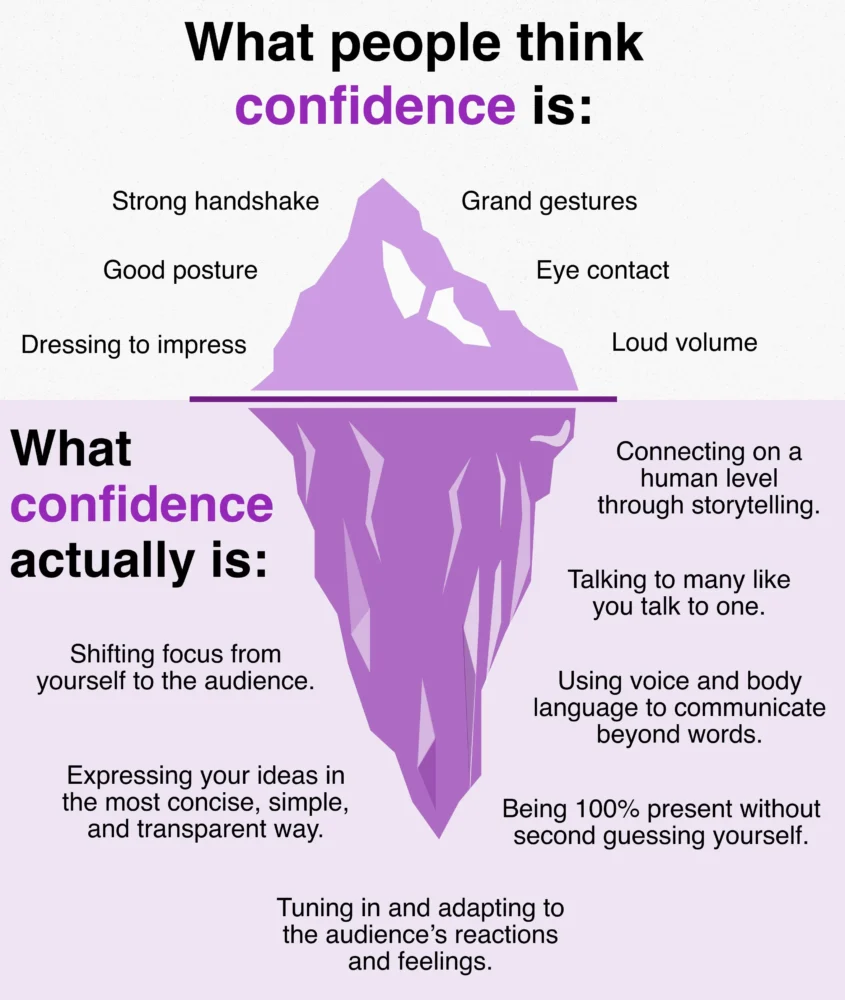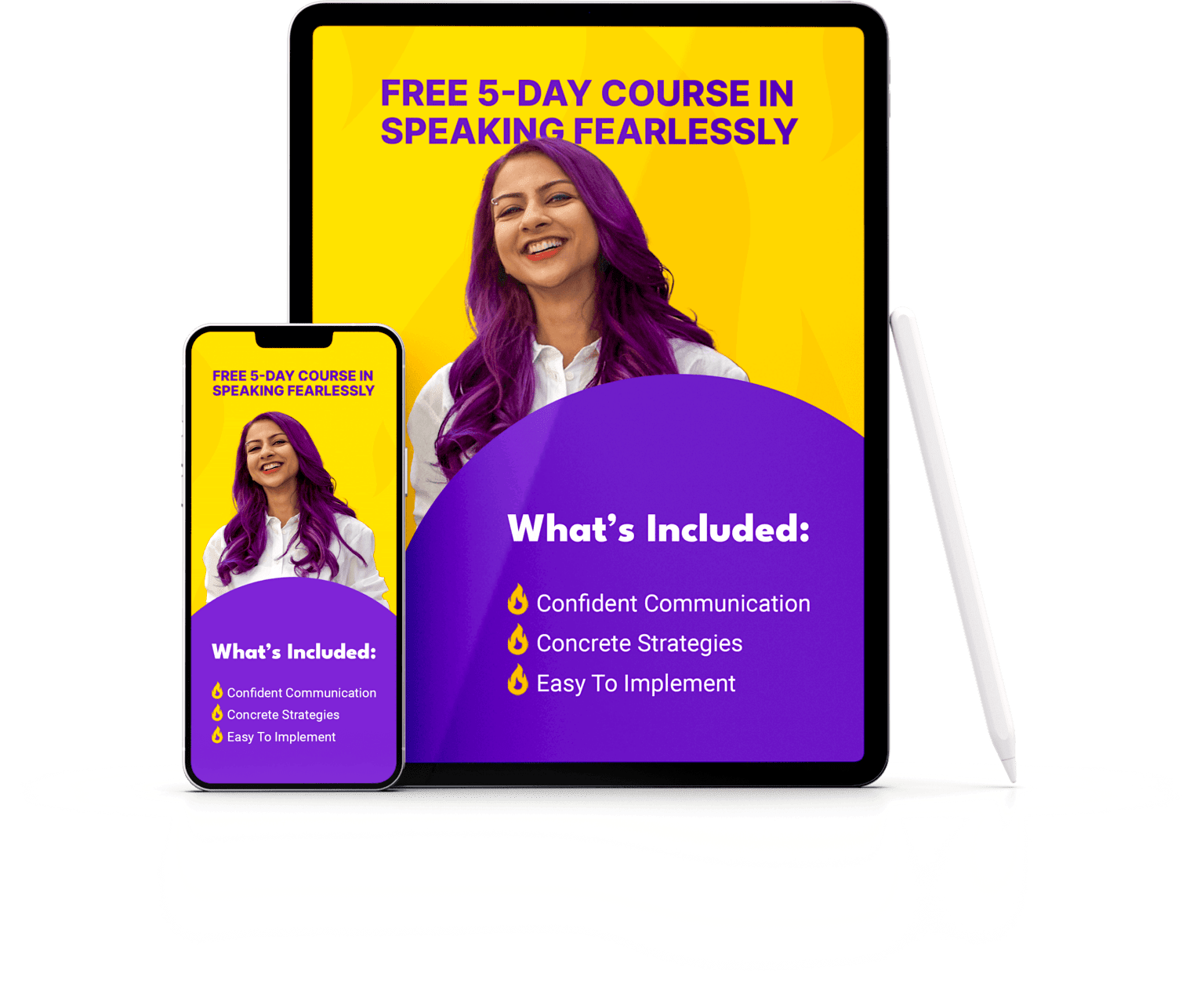I’ve worked with a lot of very accomplished CEOs and founders – who freeze on stage and on camera.
They have confidence in their expertise but not in their speaking skills.
After digging deeper, I realized this:
Confidence is skill and environment based.
Example 1:
I’m confident speaking on a stage in front of a thousand people, but I get nervous handling a knife in the kitchen.
Simple reason:
I have way more practice speaking on stage than in the kitchen.
That gives me experience-based confidence in a specific skill.
Example 2:
CEOs feel confident talking to their teams but not to an external audience.
Reason: They don’t hold “natural” authority with people outside their company – so they feel like they’re under pressure to “prove” themselves.
This makes them less confident in certain environments vs others.
But is it possible to act and feel confident in any situation?
So:
I spent an unreasonable amount of time studying confidence.
I studied the science behind feeling “confident”.
I analyzed how we label some behaviors as more “confident” vs others.
I dug deep into my weird childhood to figure out where I got confidence from, and what type of confidence I learned.
In this newsletter I’ll demystify what’s “real” confidence and what isn’t.

As modern humans, we’ve learned to associate certain behaviors with “confidence”.
All that stuff that you see on top –
A strong handshake,
Good eye contact,
Loud volume…
All of those behaviors “show” confidence.
In other words –
If someone was to display those behaviors, we would label them as being confident.
Regardless of whether they are confident on the inside.
But if you don’t feel confident on the inside, you’ll always feel like you’re faking it.
I’d know – I felt like that for decades.
I had learned to “perform” confidence by being clear, loud, making eye contact, smiling, feeding off of people’s energy…
But I had not worked on developing my inner confidence.
So I would walk away from every speaking opportunity feeling empty on the inside.
On the flip side –
If you’re totally confident on the inside, but you’re not displaying those outward signs of confidence –
People will ignore your message.
The balance between the two is gold.
Build two types of confidence simultaneously:
- Feel confident: Build inner confidence in your skills and abilities to handle any situation.
- Act confident: Show outer confidence in the way you speak and move.
Building true inner confidence – the unshakable kind that doesn’t falter with failures – can take decades.
The good news is – it’s absolutely possible.
I talk about it in more detail in this article.
Once you develop inner confidence, you’ll never feel like you’re faking it ever again.
